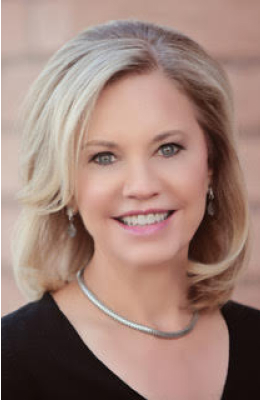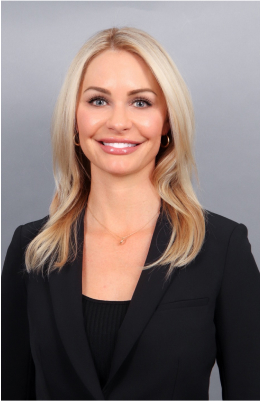The Importance of Mentorship and Training in Medical Aesthetics
A mother-daughter duo shares their unique takes and expertise learned from working together and as industry leaders.
For Jody and Jamie Comstock, working in the medical field seemed preordained. Aesthetic Dermatologist Jody Comstock, MD, comes from a long line of doctors, and even her twin brother is a physician. Her pediatrician ended up becoming a mentor and eventually, her father-in-law. Jody’s daughter, Jamie Comstock, Certified Physician Assistant (PA-C), is now a partner and founder in a med spa company with multiple locations.
“Medicine is truly a family affair. Having a medical family always made me feel that I wanted to be in medicine. I was born when my parents were in medical school transitioning to become residents. The hospital was my home. Our early family of three would eat all our meals together in the medical resident cafeteria and then one parent would take me home while the other parent was on call. I was in their medical school yearbook and my photo was the only picture hanging in the resident cafeteria.” says Jamie.
With a built-in team of mentors and sources of inspiration in their family, it’s no surprise that this mother-daughter duo has a lot of insight to share about the importance of mentorship and training for anyone interested in joining the exciting field of Medical Aesthetics, but especially for aesthetic nurses and PAs. Let’s unpack some of their knowledge.
On evolving with a new developing industry.
Jody Comstock, MD, is an Aesthetic Dermatologist based in Tucson, Arizona. Her journey began in the field of pediatrics. She especially loved all the different procedures. The broad variety of procedures eventually brought her to a second residency in dermatology, where she remembers a common occurrence that opened her eyes to the need for aesthetic dermatology.
“I would see patients with the senior attending doctors. After the attendees, primarily male physicians, left the room, the patients would grab my arm and ask, what can I do about my brown spots and my wrinkles?” Jody explains. “It was the beginning of aesthetics. This would happen patient after patient, and I realized there was a big unmet need. Patients were sincerely interested in addressing their facial concerns. My medical school class was the first class that was 51% women. It was a new era. So, I began my aesthetic journey as an early pioneer of Aesthetic Dermatology and Medical Aesthetics.”
Not only did this give Dr. Jody Comstock an opportunity to help the field grow from its very beginning, but also to work with and learn from other Medical Aesthetics innovators and pioneers. “I would take the day off work, pay for these shadowing days on my own, and literally mentor with leaders and innovators. Now, all of these individuals are my colleagues and friends.”
For Jamie Comstock, PA-C, the draw to Medical Aesthetics was about watching her mom’s patients’ experiences. “I started working with my mom and her patients kept saying, ‘your mom's a wizard, my skin is amazing!’ Everybody in town would talk about her. My dad, on the other hand, was in the ER and happily and successfully treating patients, but it was a completely different type of medicine. It was reactive versus proactive. No one wants to be a patient in the ER! So that's when I decided I wanted to go into aesthetics. You can really have a positive impact and develop long term relationships with your patients.”
On learning the basics first.
For Jamie Comstock, it’s all about building a strong foundation. We asked her what types of Medical Aesthetic training and certifications people should seek out if they are just getting started.
According to Jamie, “That's a tough question because there isn’t one specific answer. So, I would recommend getting some of your training from one of the Medical Aesthetic companies. Most of the reputable companies are well organized and are scientifically based. I always recommend an anatomy course with a cadaver lab to really understand the skin, the aging process, and the science of rejuvenation. I also think it’s important to get laser certified.”
For Dr. Jody Comstock, the industry has come a long way since her early days without internet or computer technology. “Our teaching tools were big notebooks with laminated photos, and we had to hard copy everything. But now, in my office, I have one of 10 devices created for virtual training in the world. I can take 10 steps out of my office and walk into this room and teach 25 or thousands of people with excellent AV and visualization and walk back into the clinic an hour later. We also have exam room monitors to show patients in detail their before and after photos and examples of procedures we may be suggesting.
Still, even though technology has evolved rapidly, Dr. Comstock thinks there is still room for advancement, especially when it comes to training, licensing, and certification programs. “There are some specific courses tailored to the field of Medical Aesthetics. But I think that it’s still evolving, and hopefully, there's going to be a very specific type of fellowship unique to this unique industry.”
On carving out a niche for Physician Assistants (PAs).
Dr. Jody Comstock believes strongly in the value of having PAs on her staff. “We hired our first PA 20 years ago. We select kind, motivated, smart team players to work with each physician. Then, we saw this trend starting with PAs taking on more responsibilities, doing more procedures. We did not have all the training tools available today, so we just started creating training tools. We did not have our PAs see their own patients for sometimes six months to a year. They would assist us as a medical assistant to learn the rhythm, understand patients, get to see some follow ups, and especially understand the culture of our practice. And then they would need to simultaneously practice aesthetic medicine. So, we would have them inject staff and do other procedures and injectables to learn. When staff started requesting the PAs for their personal procedures, we knew they were ready to start seeing their own patients. We have also just hired our first NP and have also hired nurses to help provide care."
She continues, “Our goal is to have every one of our injectors become a trainer because there are certain skills that you need to get to the level of being able to train others. We carry that across with skincare products; we feel like facial care is critical for each innovation. My number one mission is patient care and number two is teaching and training our staff and being a mentor to others that we work with to further the industry.”
On mentorship vs shadowing.
Both Comstocks agree that mentorship and shadowing are essential to building your career as an aesthetic nurse or PA in the Medical Aesthetics industry but are quick to point out the differences between the two.
Jamie says, “for me, I had my mom as a mentor. It's more of her taking me under her wing. If I want to shadow another doctor for a day, it’s likely that I want to pick up a technique, pick up a tip or two. When you first start, if you just go shadow, you’ll miss so much. A mentor is someone you can grow with over time. They can give you advice. It's that inner, bonding part of mentorship that makes it a deeper learning experience.”
Dr. Comstock chimes in, “When I mentor, it's on a medical as well as a social basis. Most of the industry is female dominated. So as a mentor, I can help provide some insight about how to weave the complex balance of social life and medicine, of education and medicine, of family and medicine.”
Some parting advice from an industry pioneer.
After over 30 years in Medical Aesthetics, Dr. Jody Comstock’s passion hasn’t diminished at all. She still talks about how exciting the industry is, how much she loves to learn and grow her own skills and knowledge, and how creative, collaborative, and dynamic her career journey continues to be.
To anyone first sparking their career, she says, “Number one, I think it's the best career ever. Number two, never underestimate excellent aesthetic medical training and excellent experiences; it will shorten your learning curve and it will be much less expensive. It's a cost saving to learn before you jump out there. Number three, what we do is medicine. Because it can be such a positive experience, don’t minimize the seriousness of safety and trust. It requires as much learning and expertise as other areas of medicine, so follow all safety guidelines along the way.”
Dr. Comstock also points out the importance of maintaining a healthy work-life balance, taking time to care for yourself, because this industry is about providing a positive patient experience. “If someone's tired, it’s very hard to learn and grow and to radiate positive energy to patients. In any type of medical care, the bedside manner is critical. In our industry, you want someone to trust you because you're building a relationship with them. If you’re going to a provider because you want to make a positive change, the provider needs to have a positive attitude. And that comes from balance, from passion, and from loving that we get to work in such a creative, dynamic, collaborative industry!”

CREDIT
About Dr. Jody Comstock, MD
Aesthetic Dermatologist Dr. Jody Comstock might be a pediatrician today if not for a scheduling glitch during her residency in Grand Rapids, Michigan. A canceled clinical rotation during medical school education landed her in a dermatology rotation instead, and, more than 25 years later, she’s now a leading dermatologist in Tucson, Arizona. Known nationally and internationally as a pioneer in the field of aesthetic dermatology, Dr. Comstock is contacted often for her thoughts about the latest advances in techniques, products, business strategies, and leadership skills.

CREDIT
About Jamie Comstock, PA-C
Jamie Comstock, PA-C, is a native of Tucson, Arizona and received her undergraduate degree from Eller Business School at University of Arizona. She then went on to get her master’s degree in physician assistant studies from Midwestern University in Phoenix. She is certified with the National Commission on Certification of Physician Assistants and is state licensed in Arizona, California, and Nevada. Jamie specializes in facial aesthetics, preventative medicine, and skin care. With a strong interest in the global approach to facial rejuvenation, she takes into account the patient’s overall face when providing an evaluation and recommendations.

